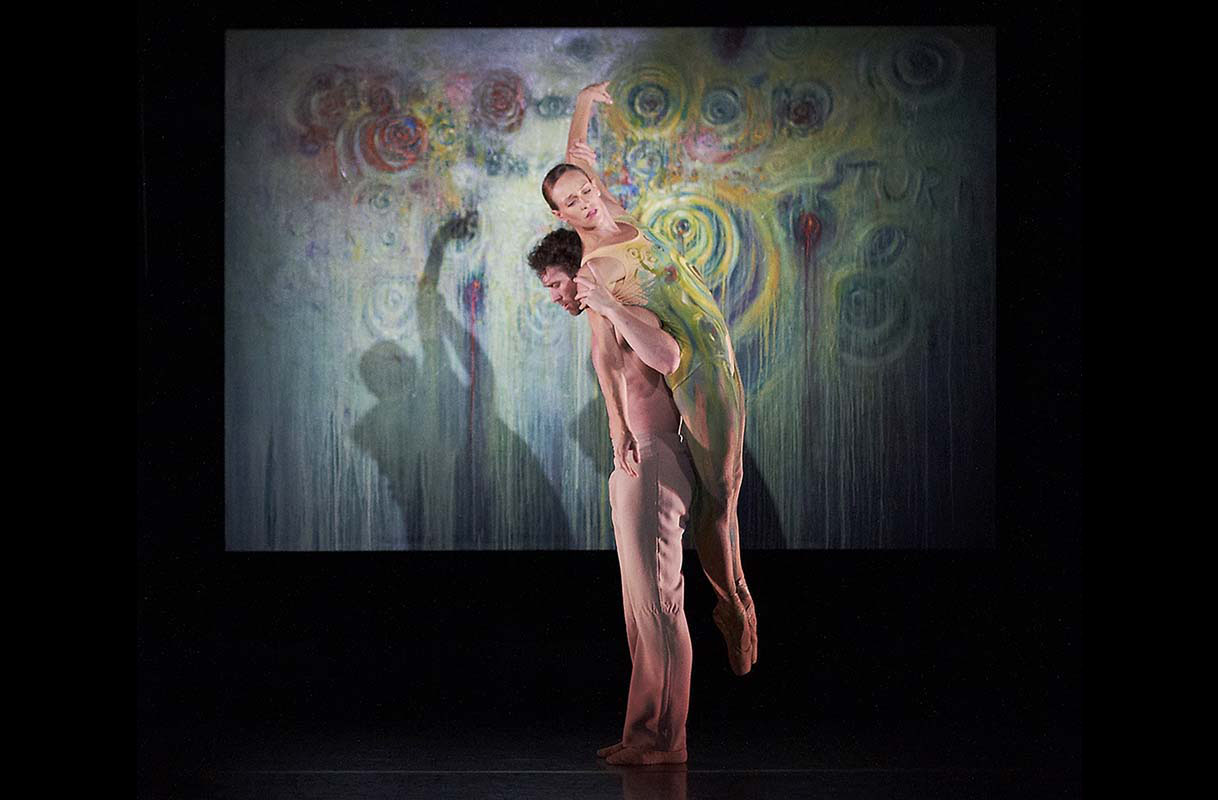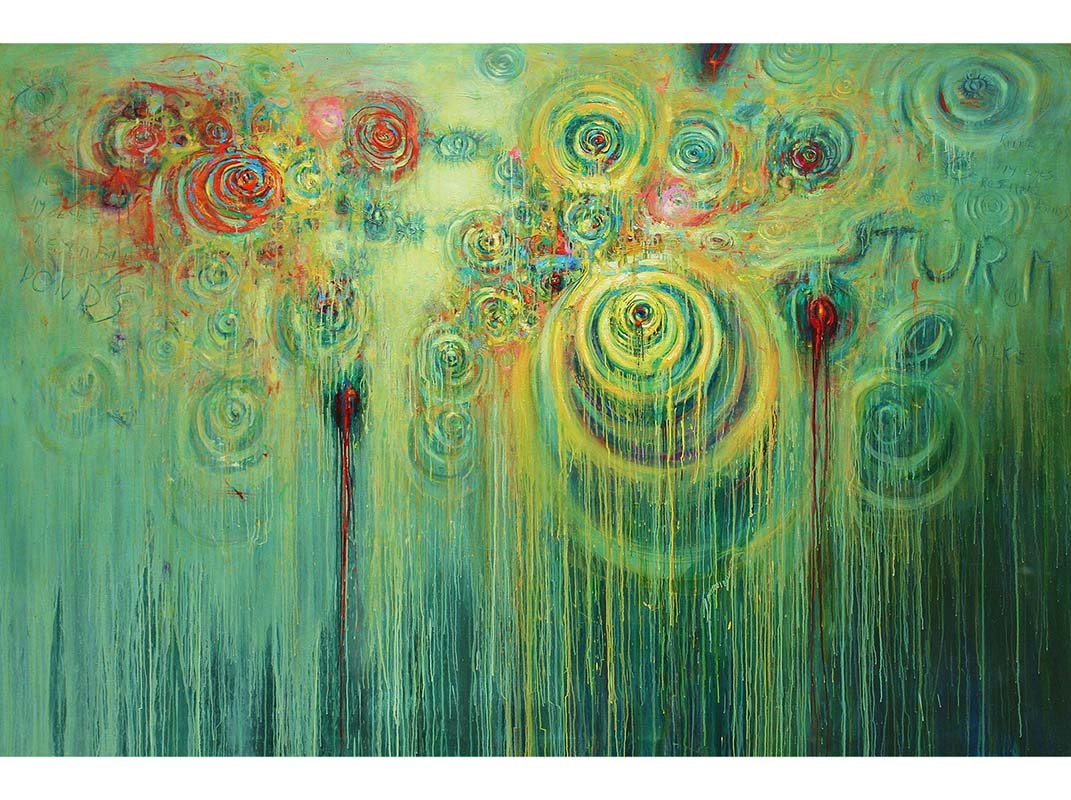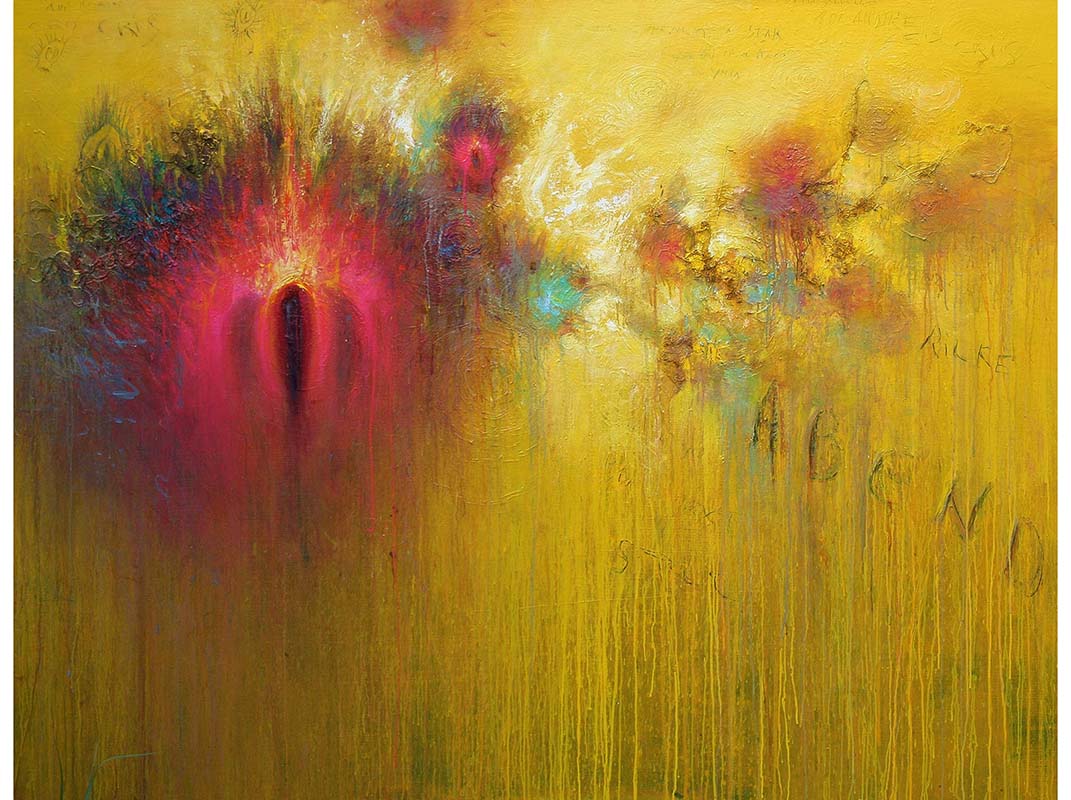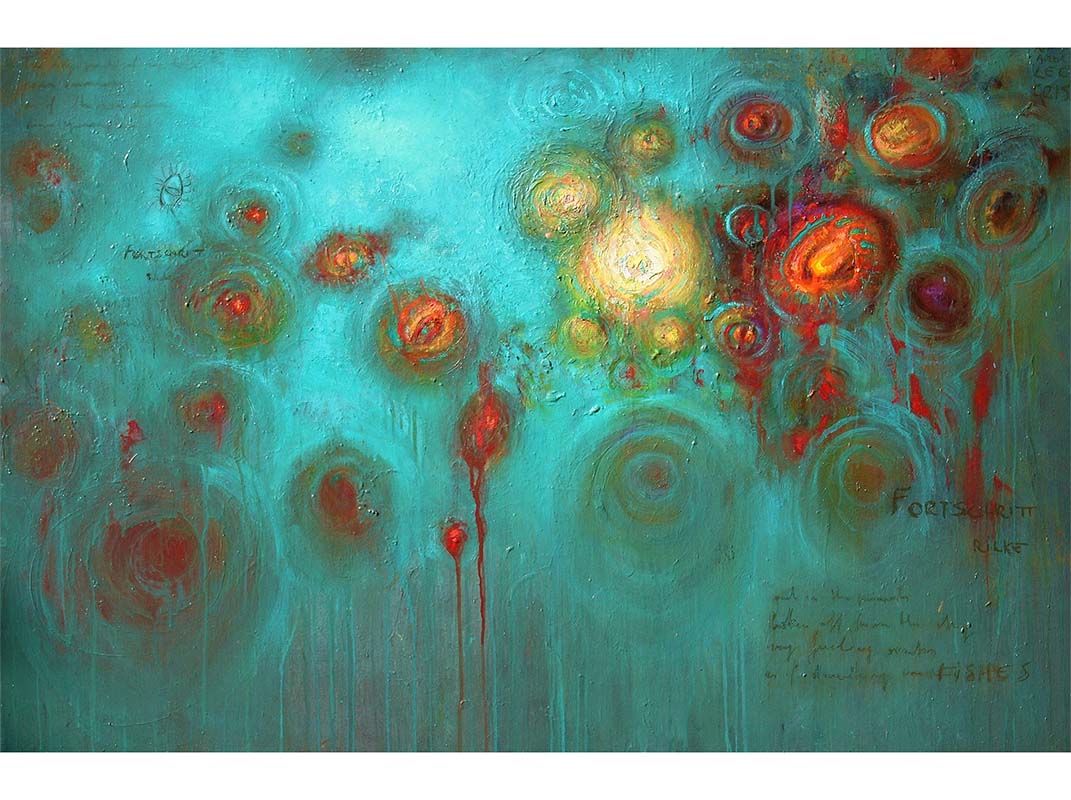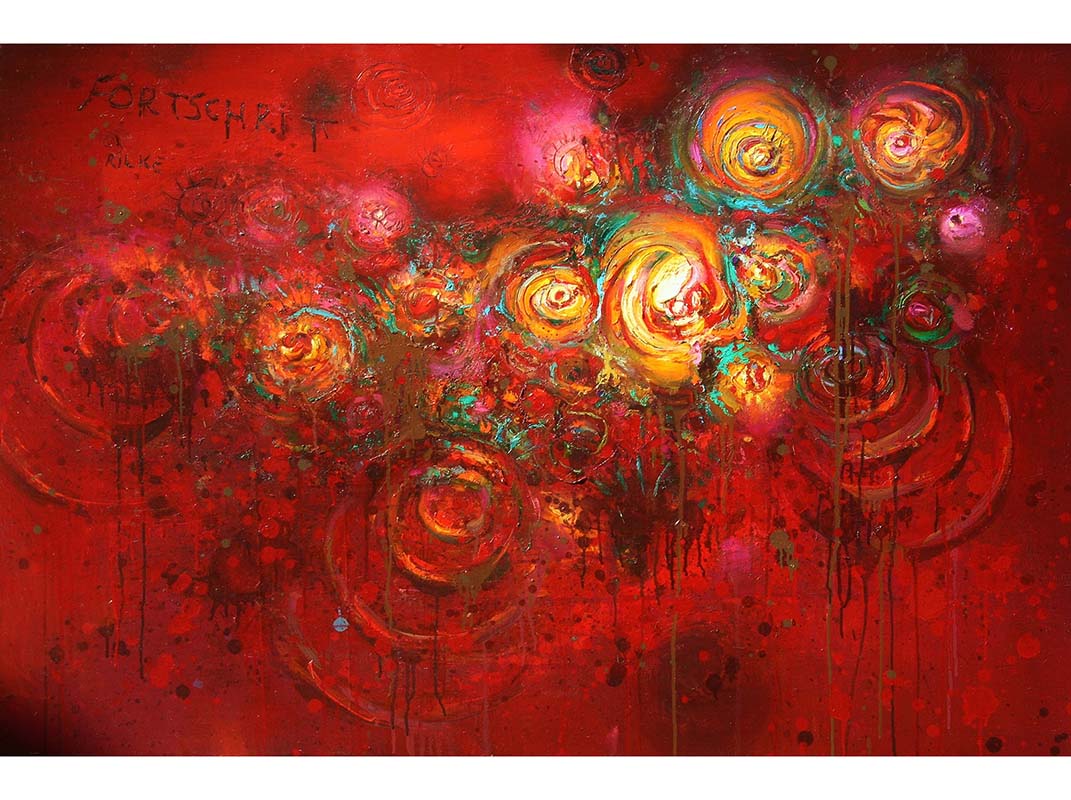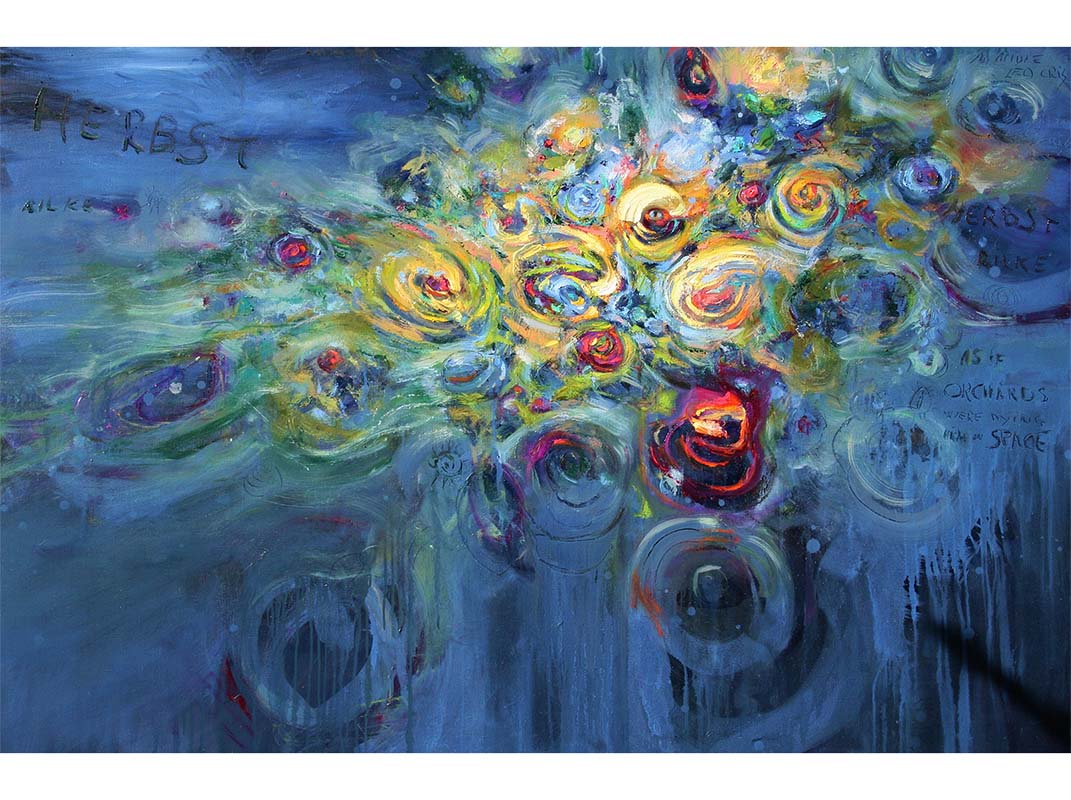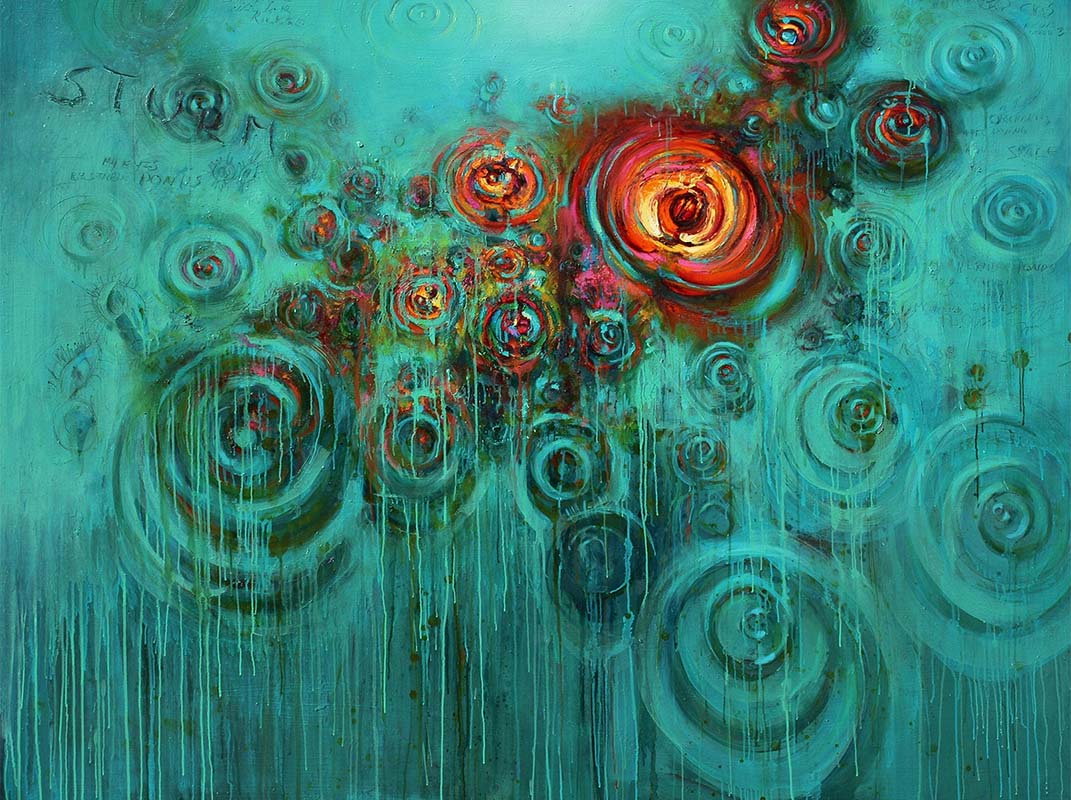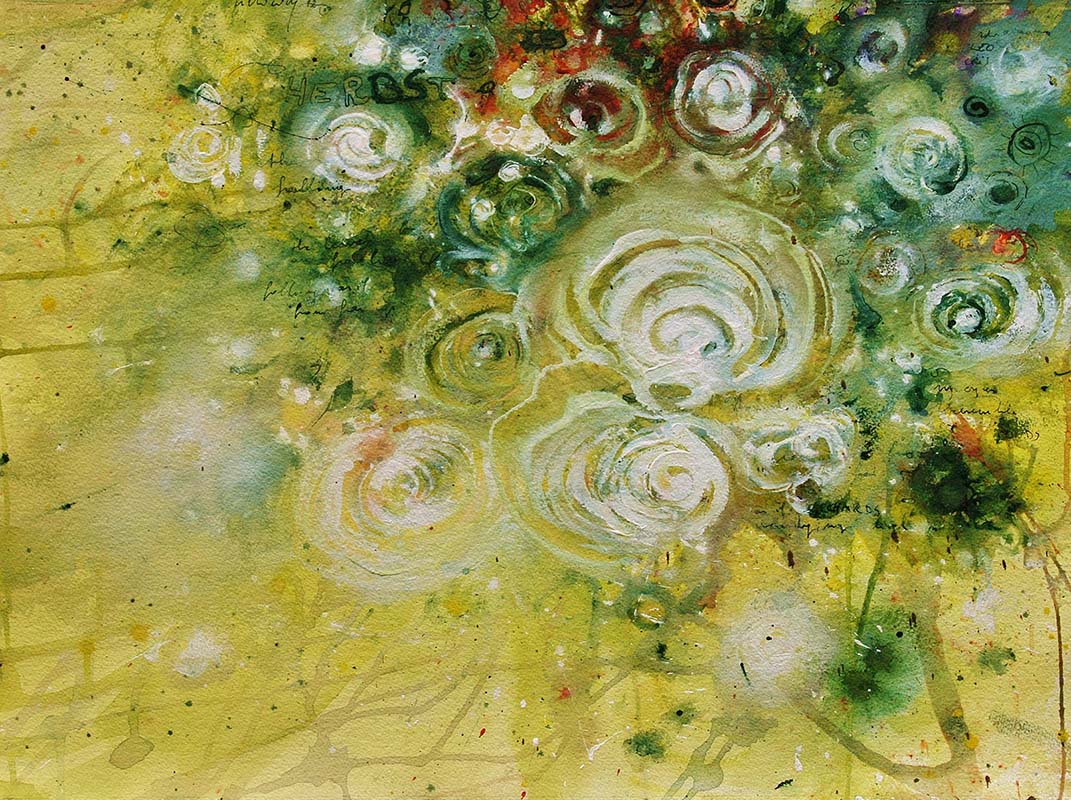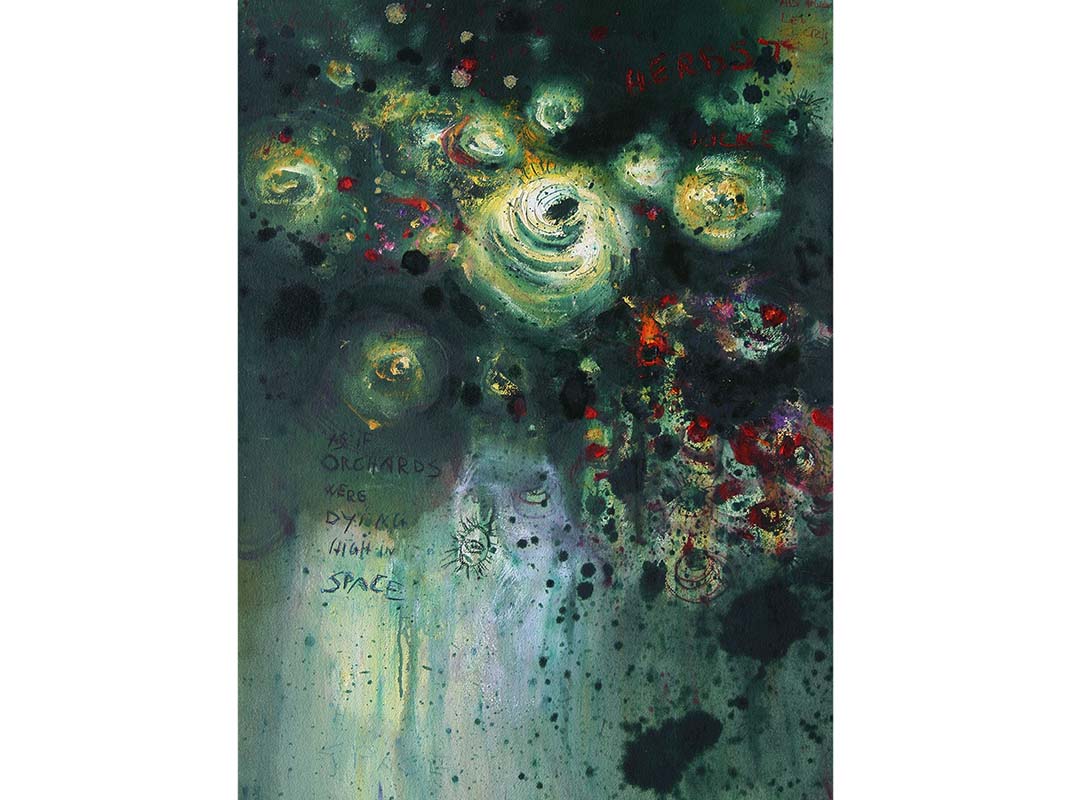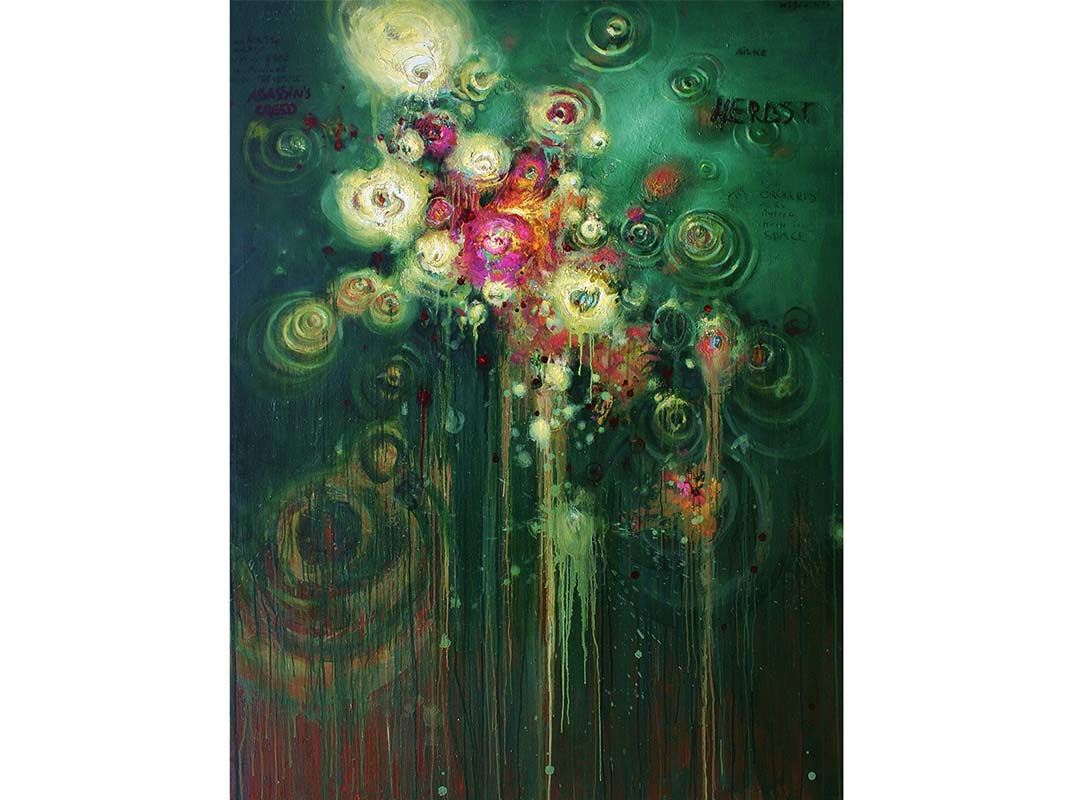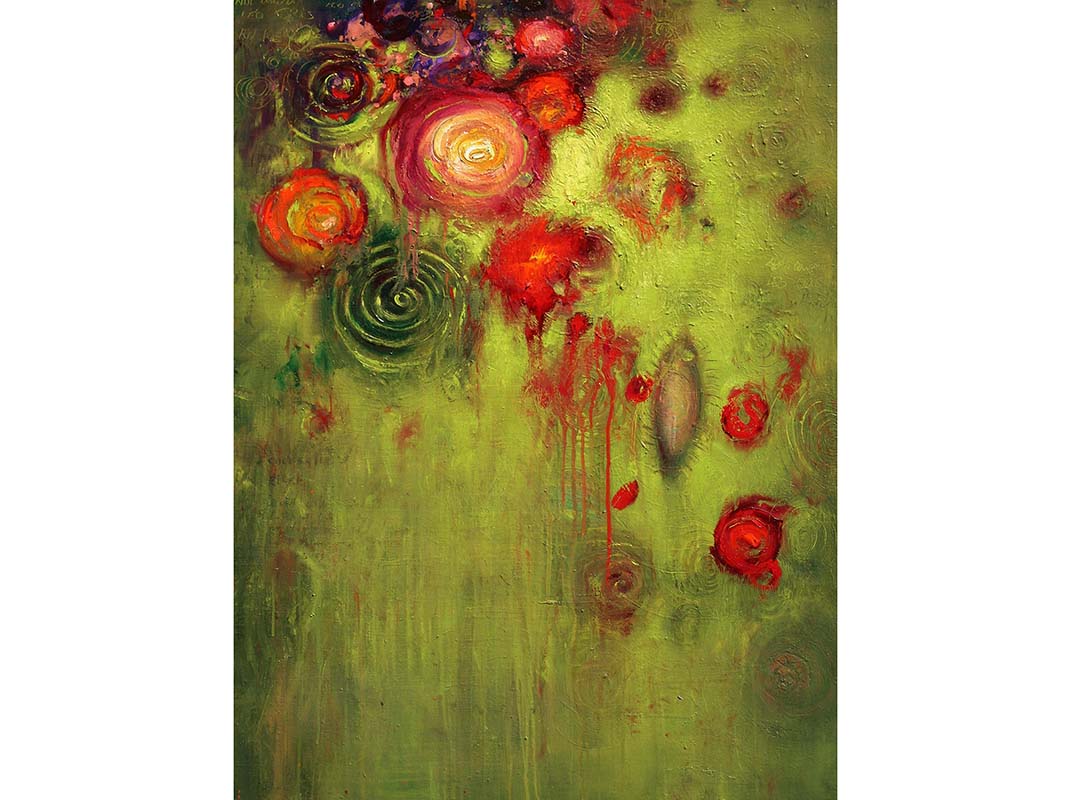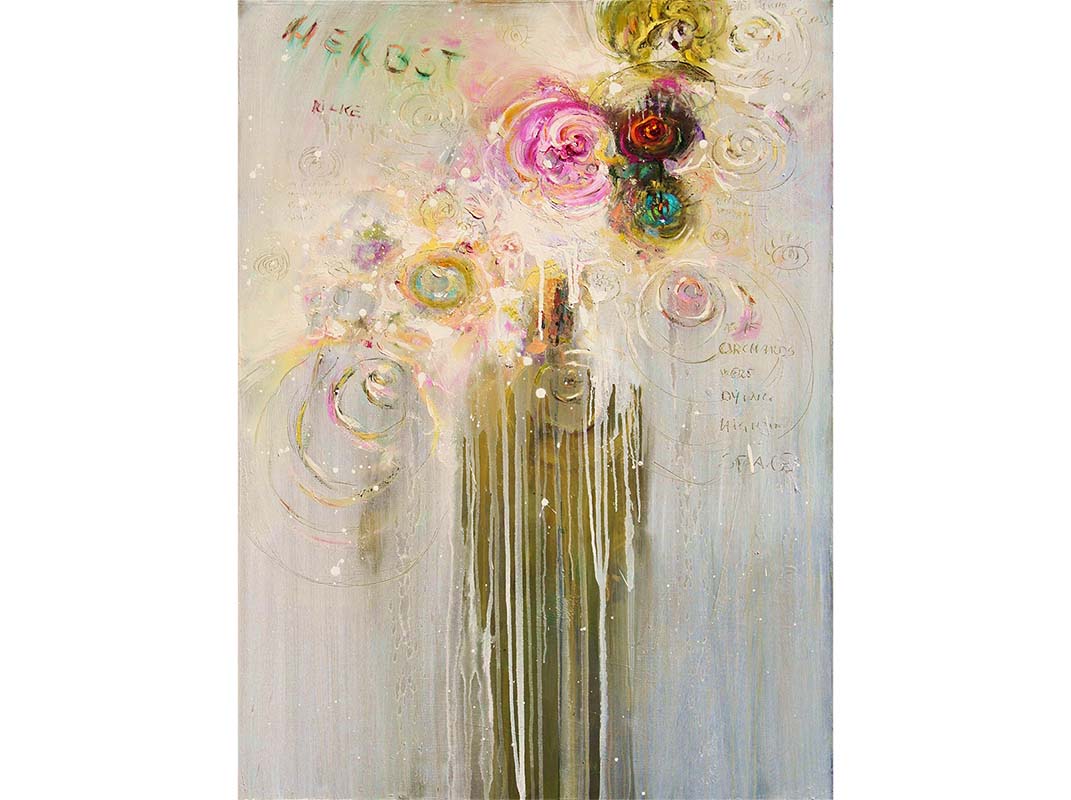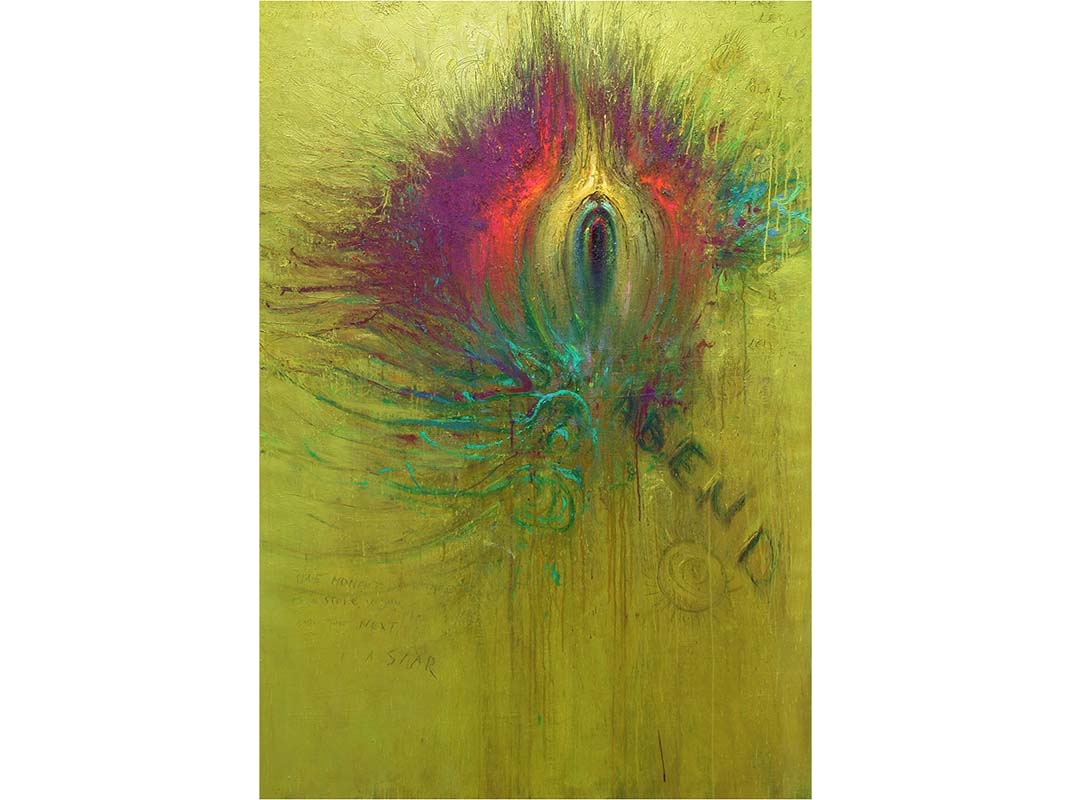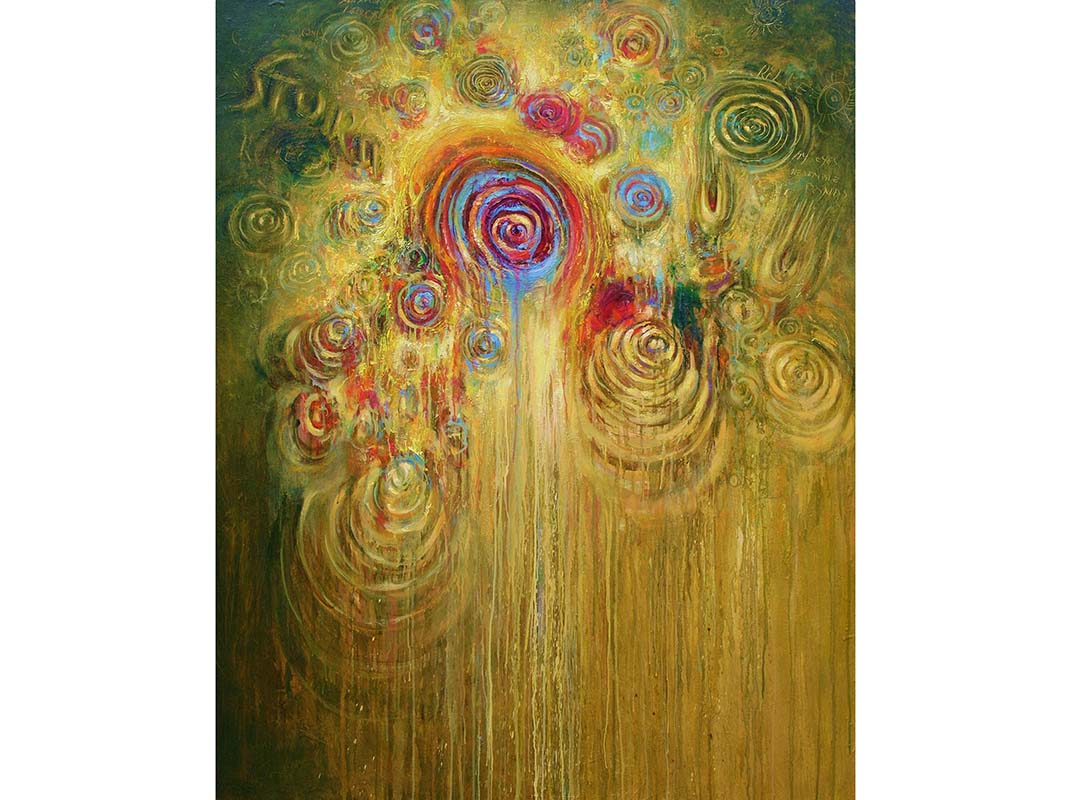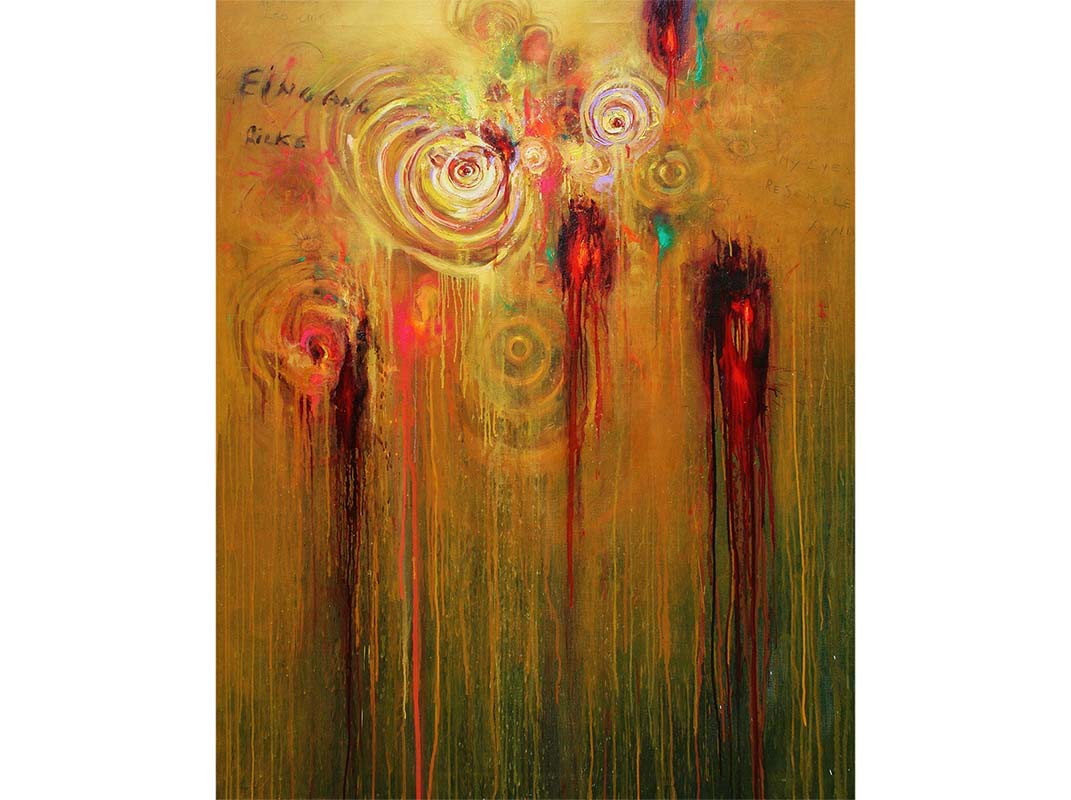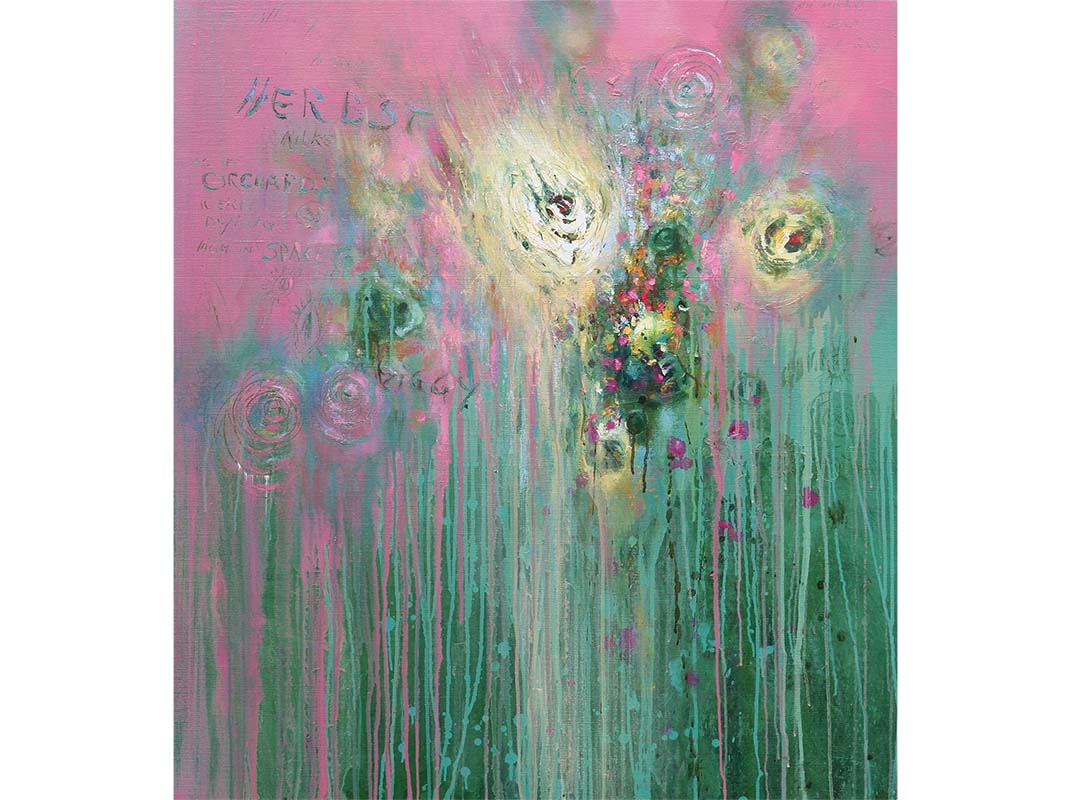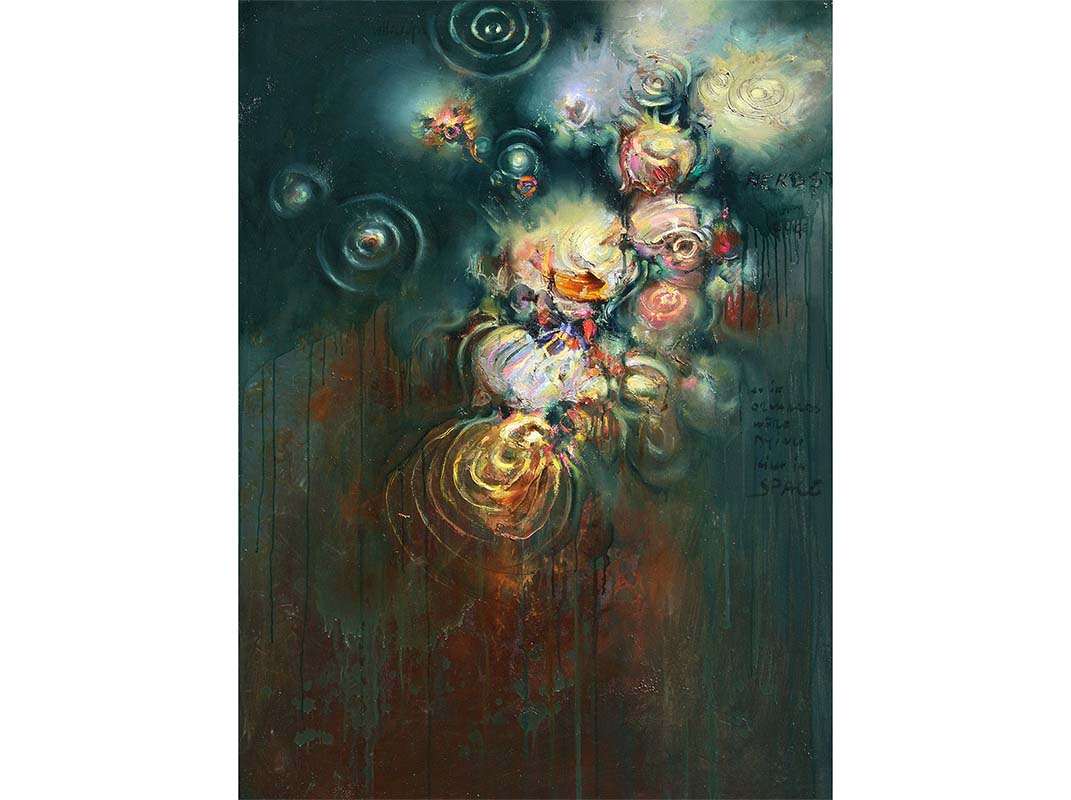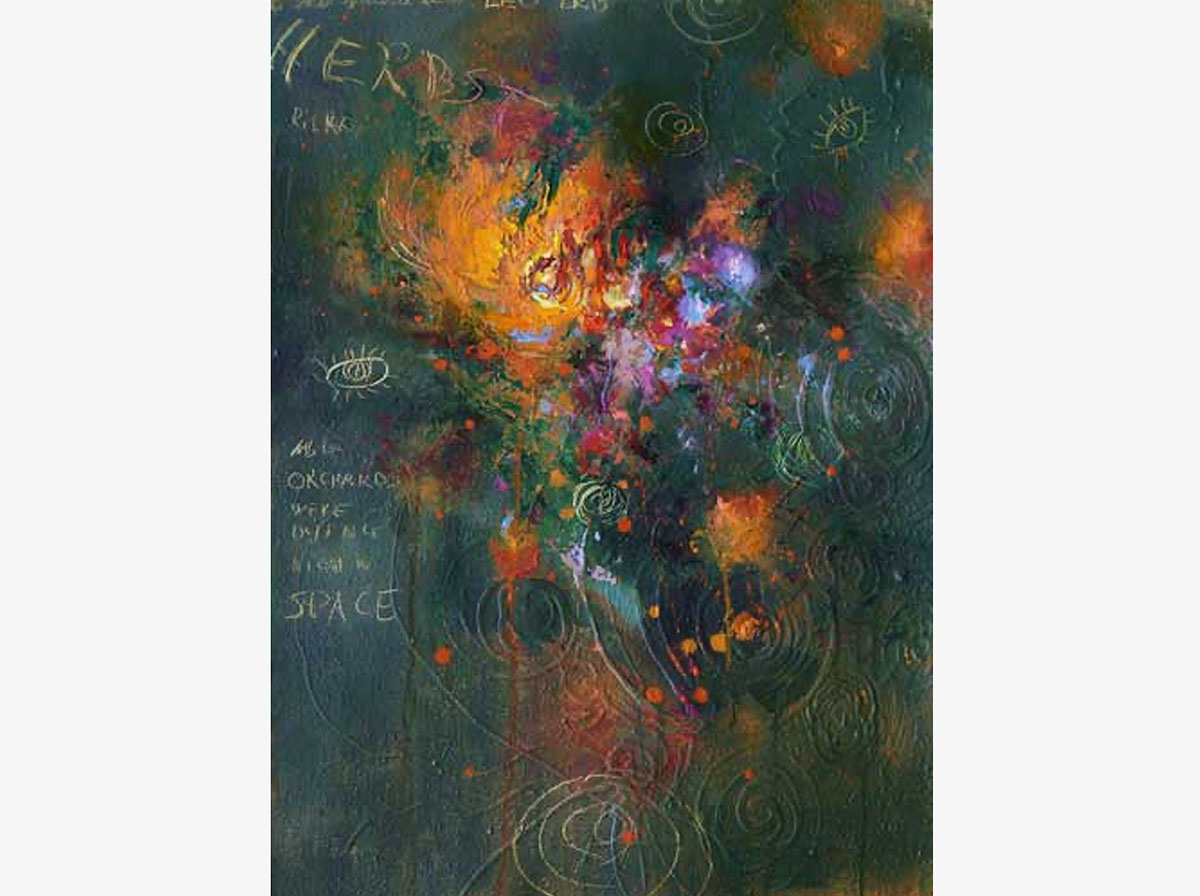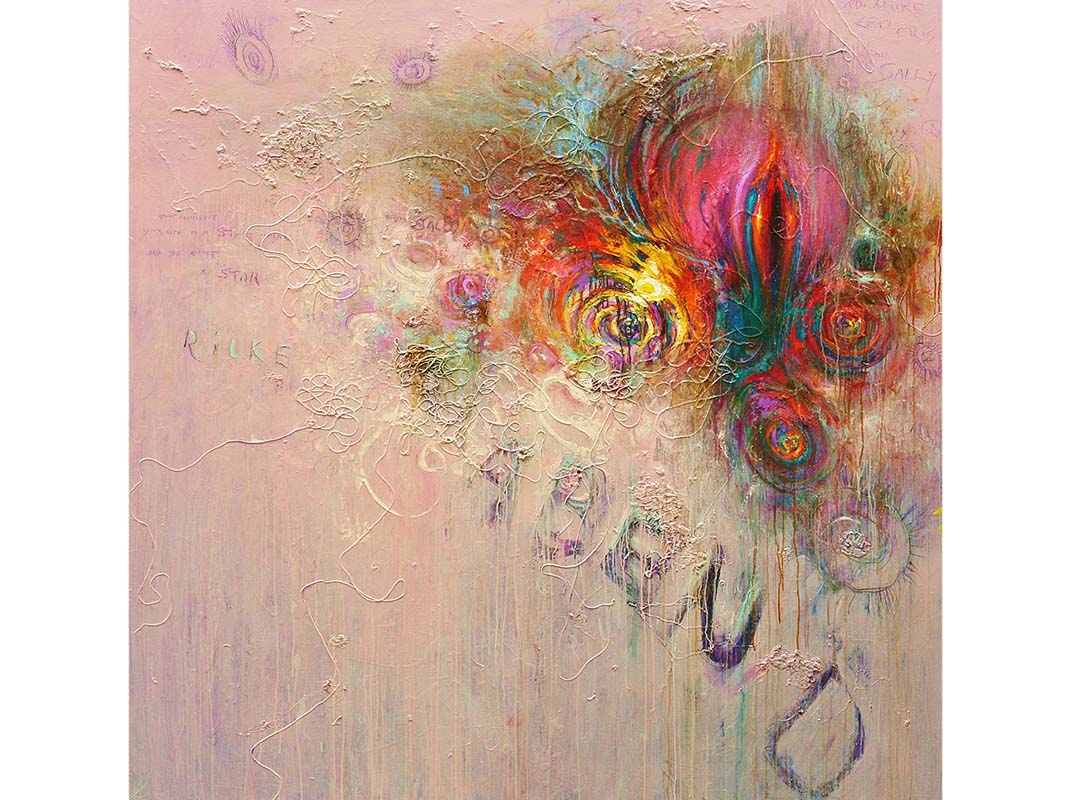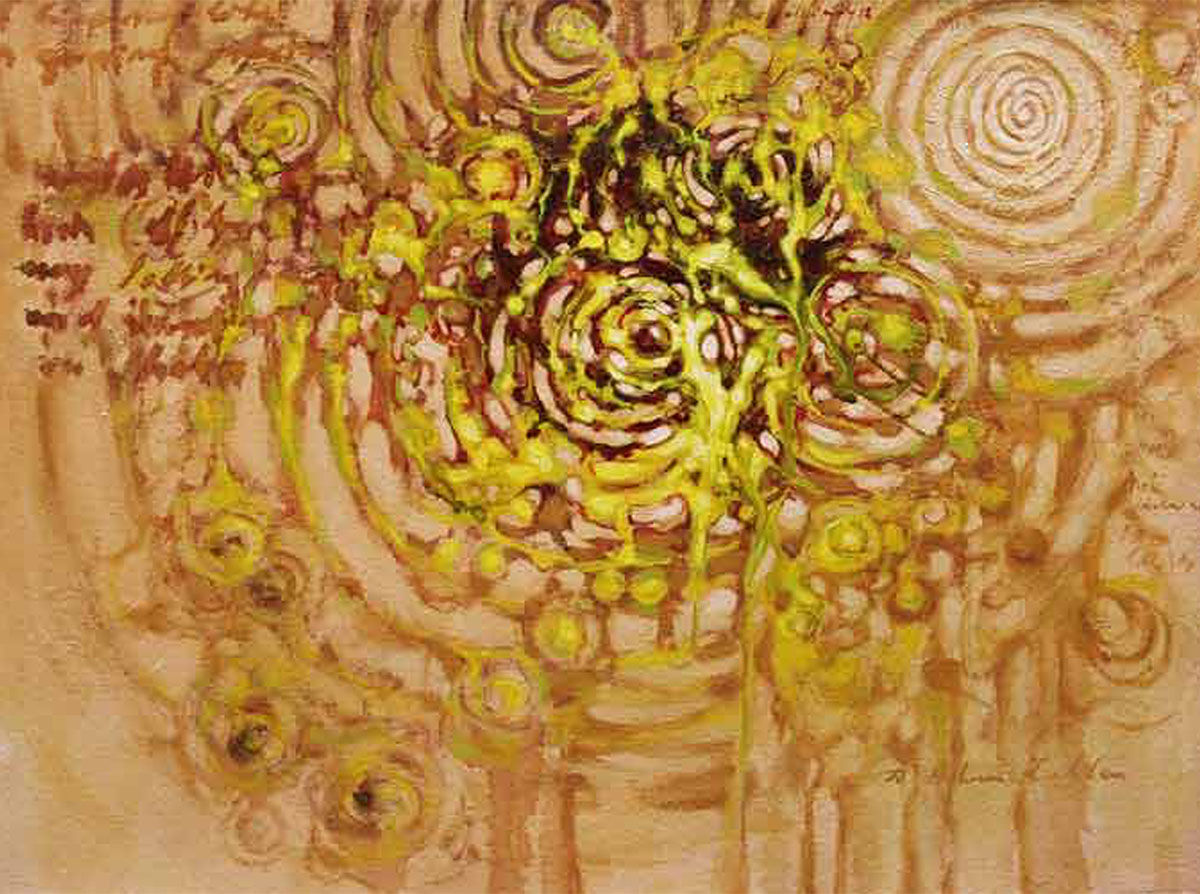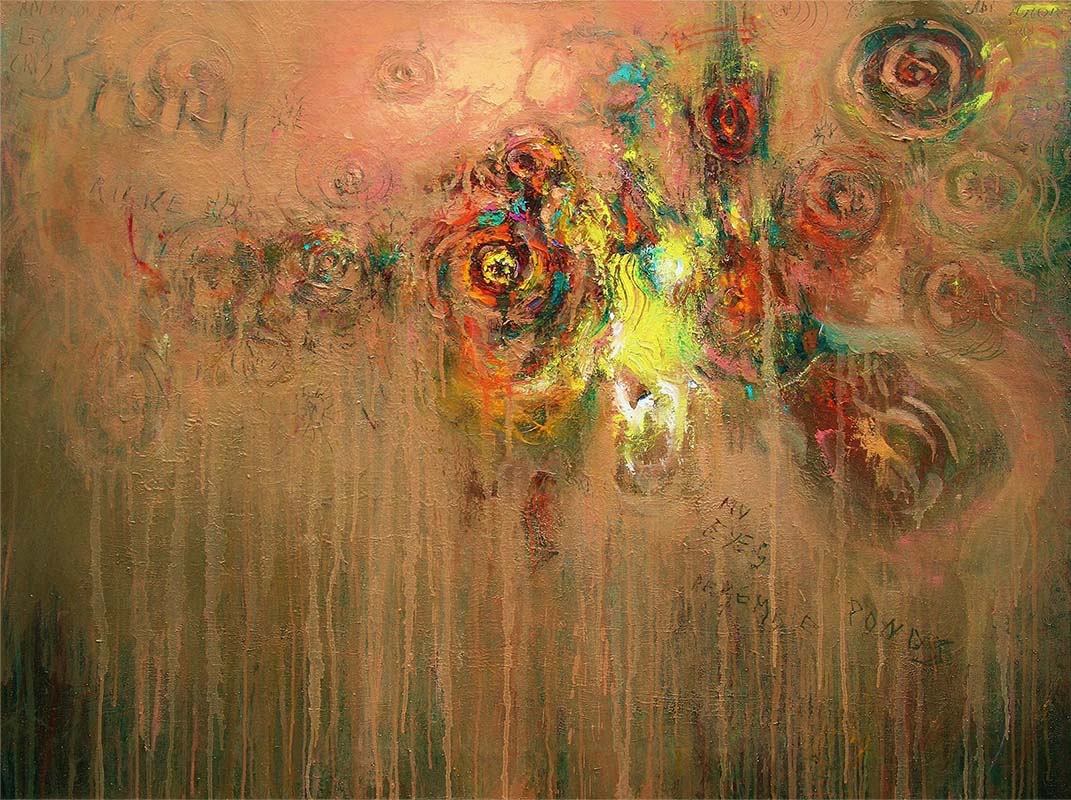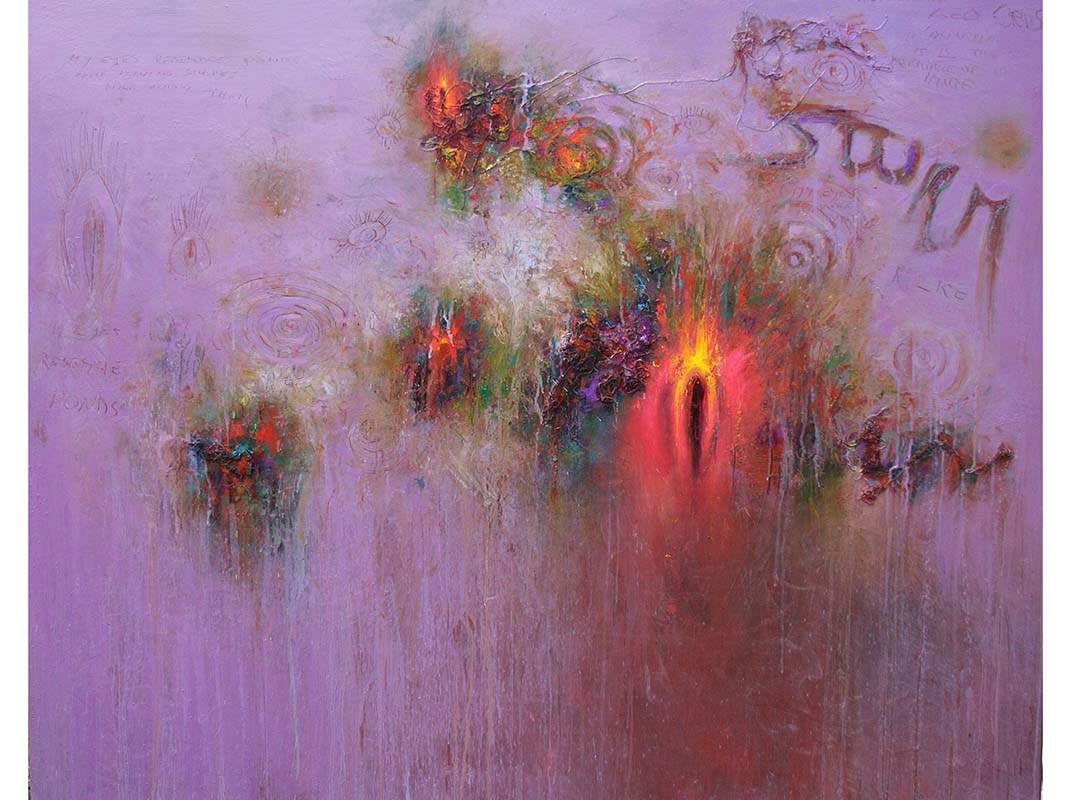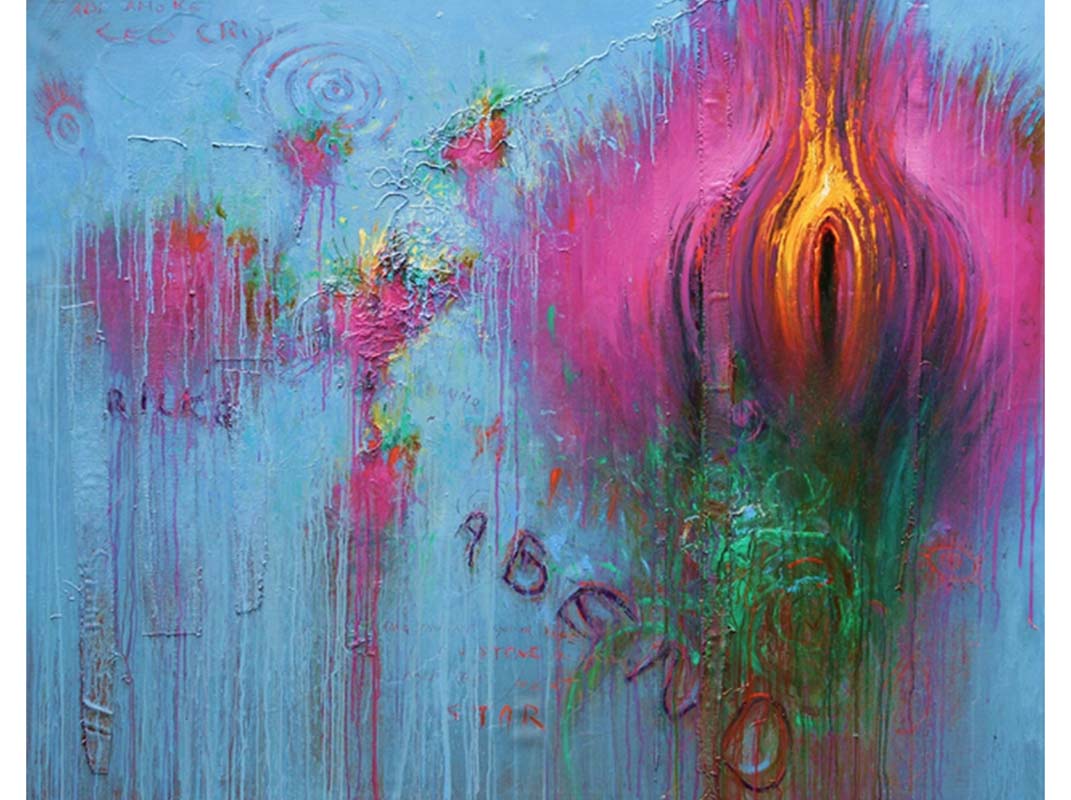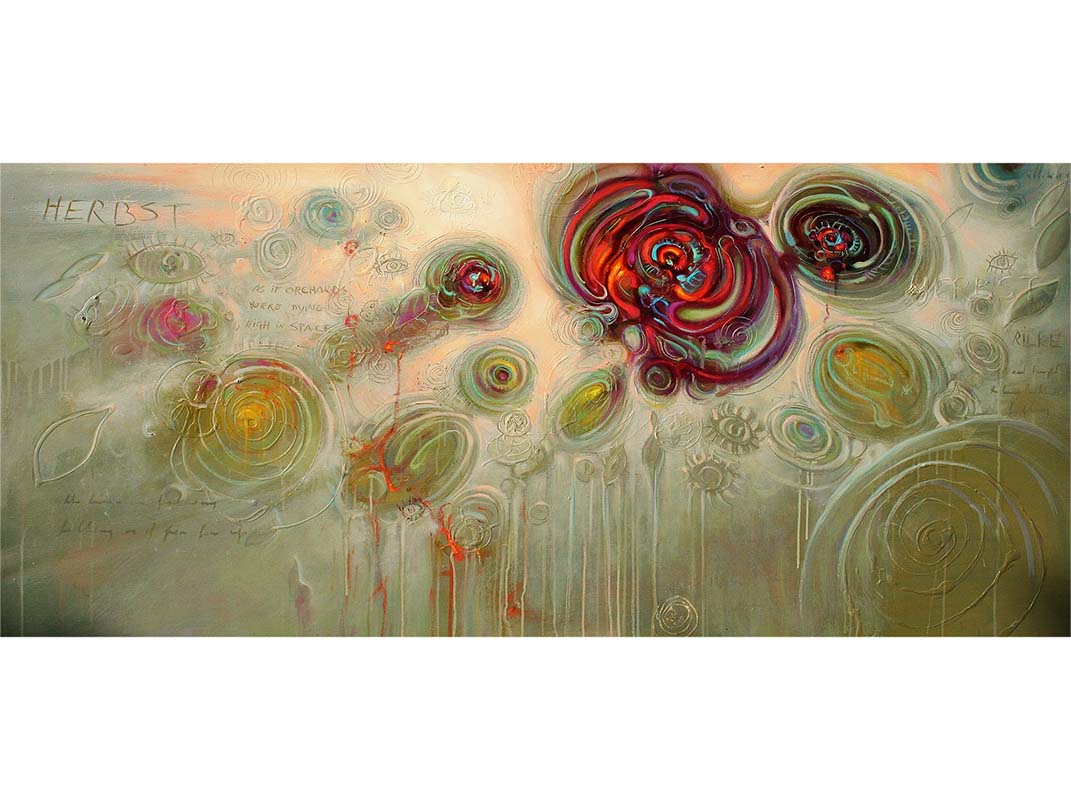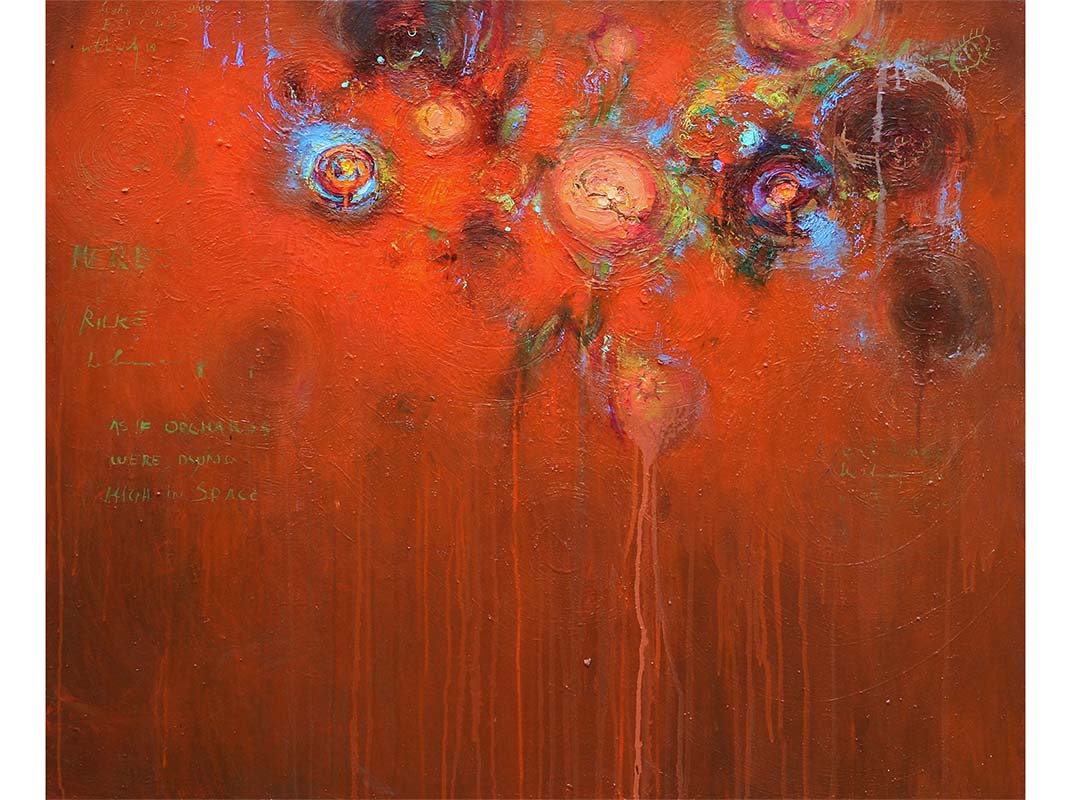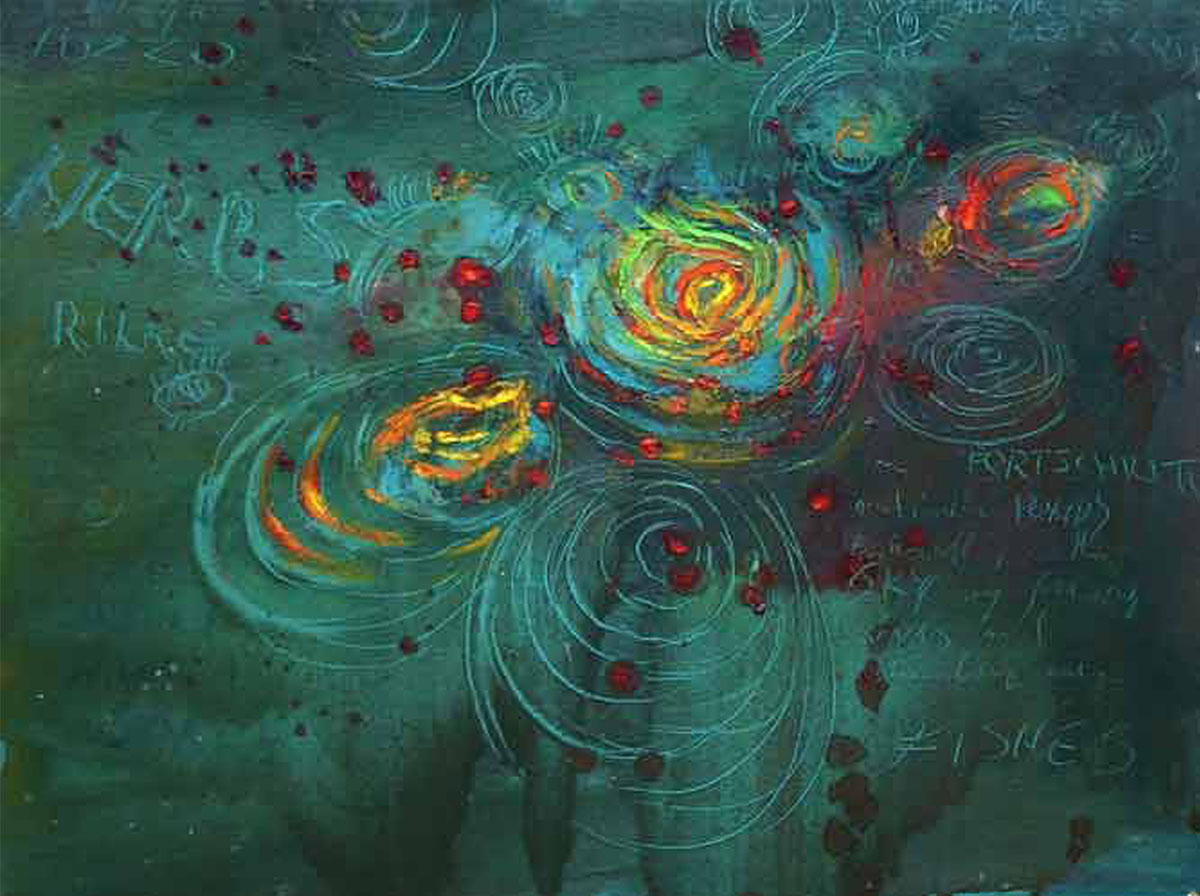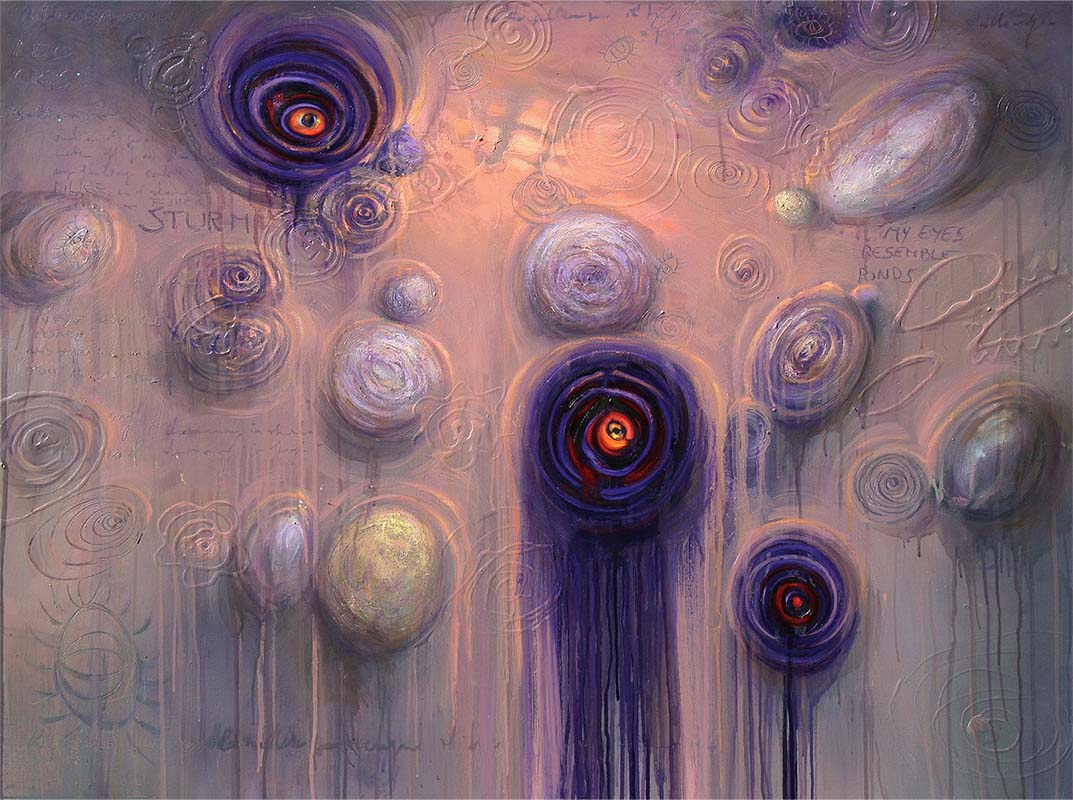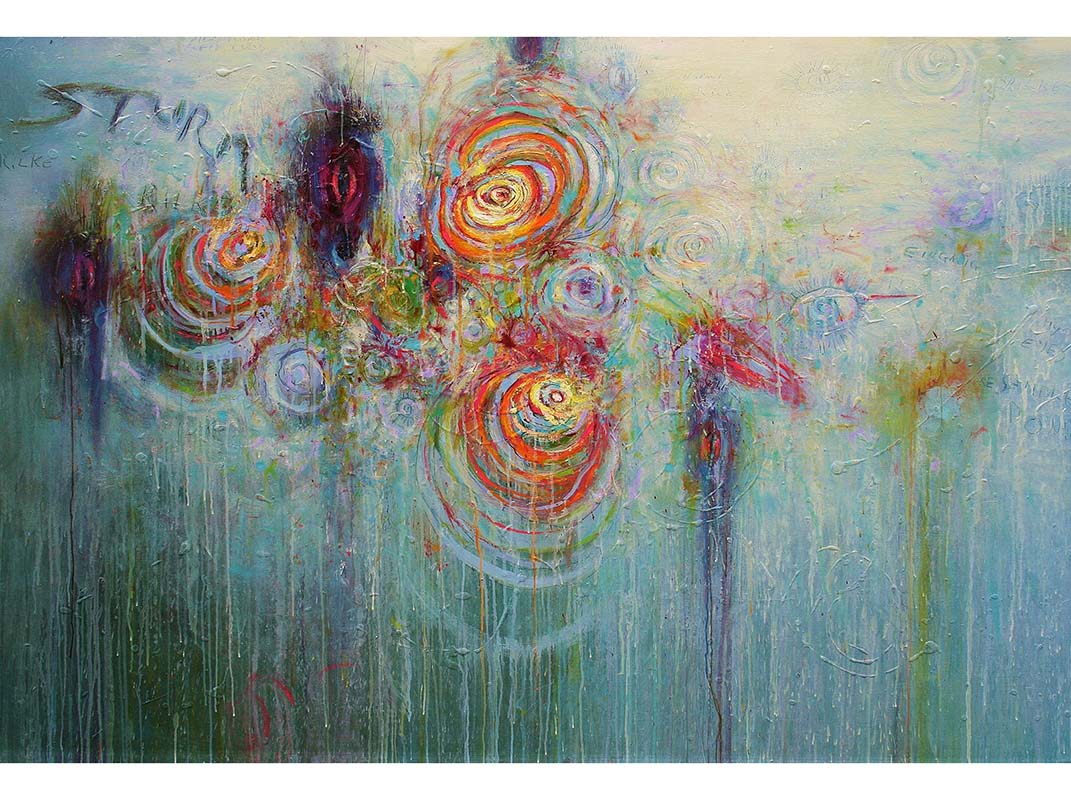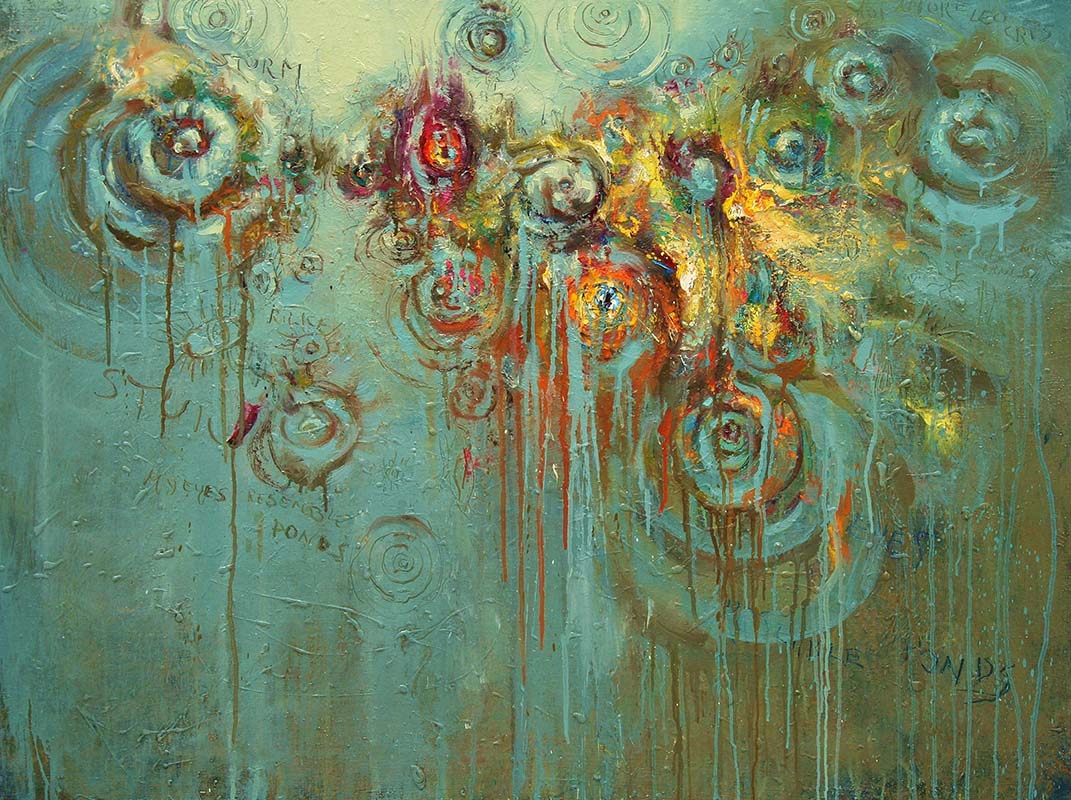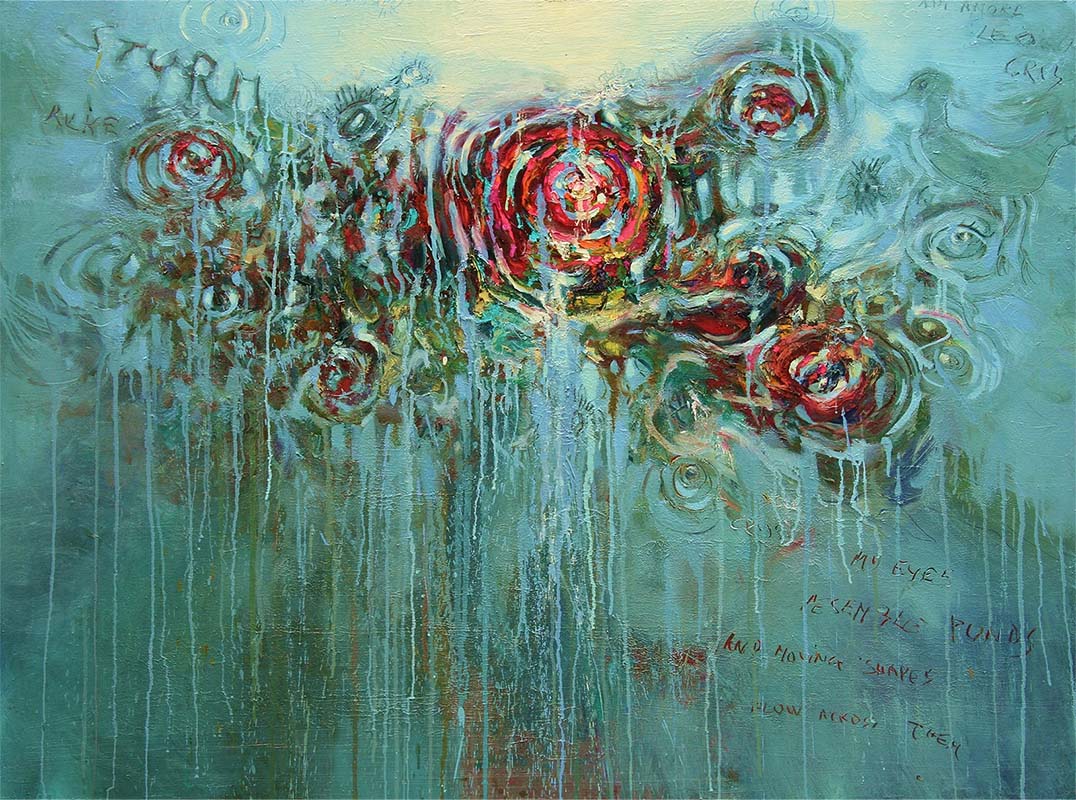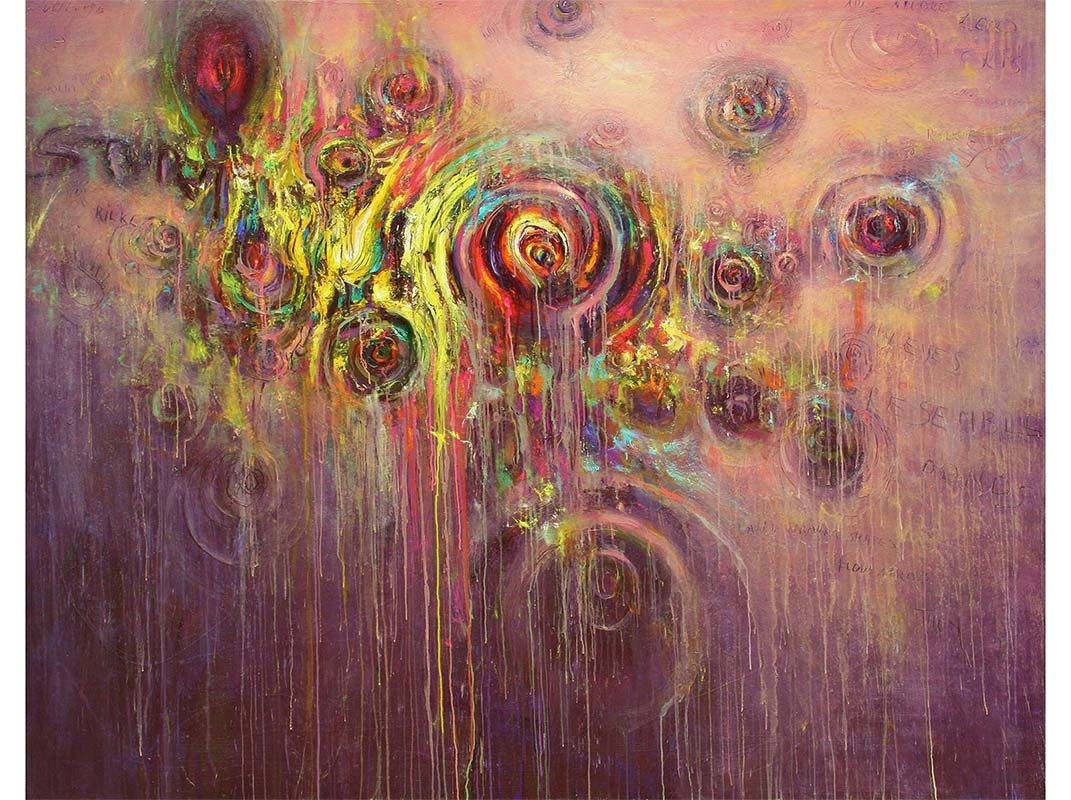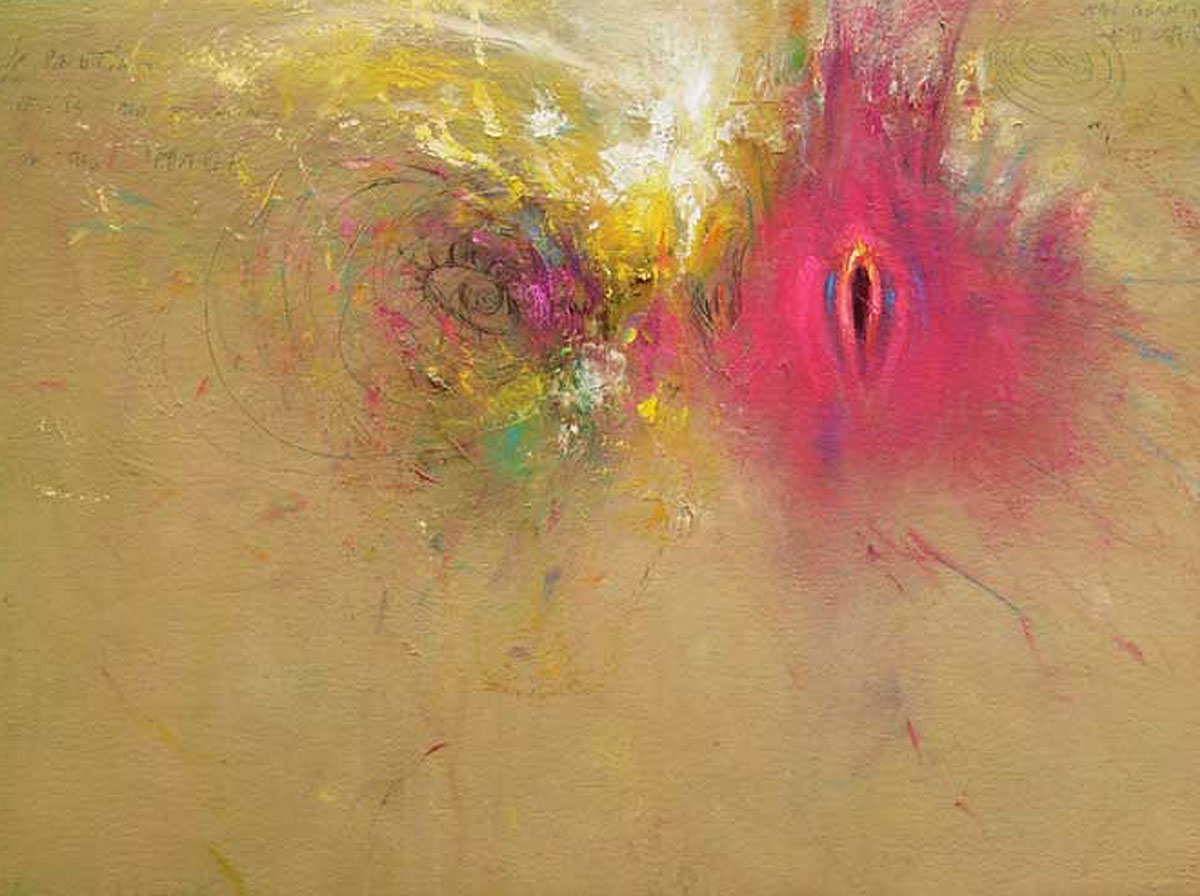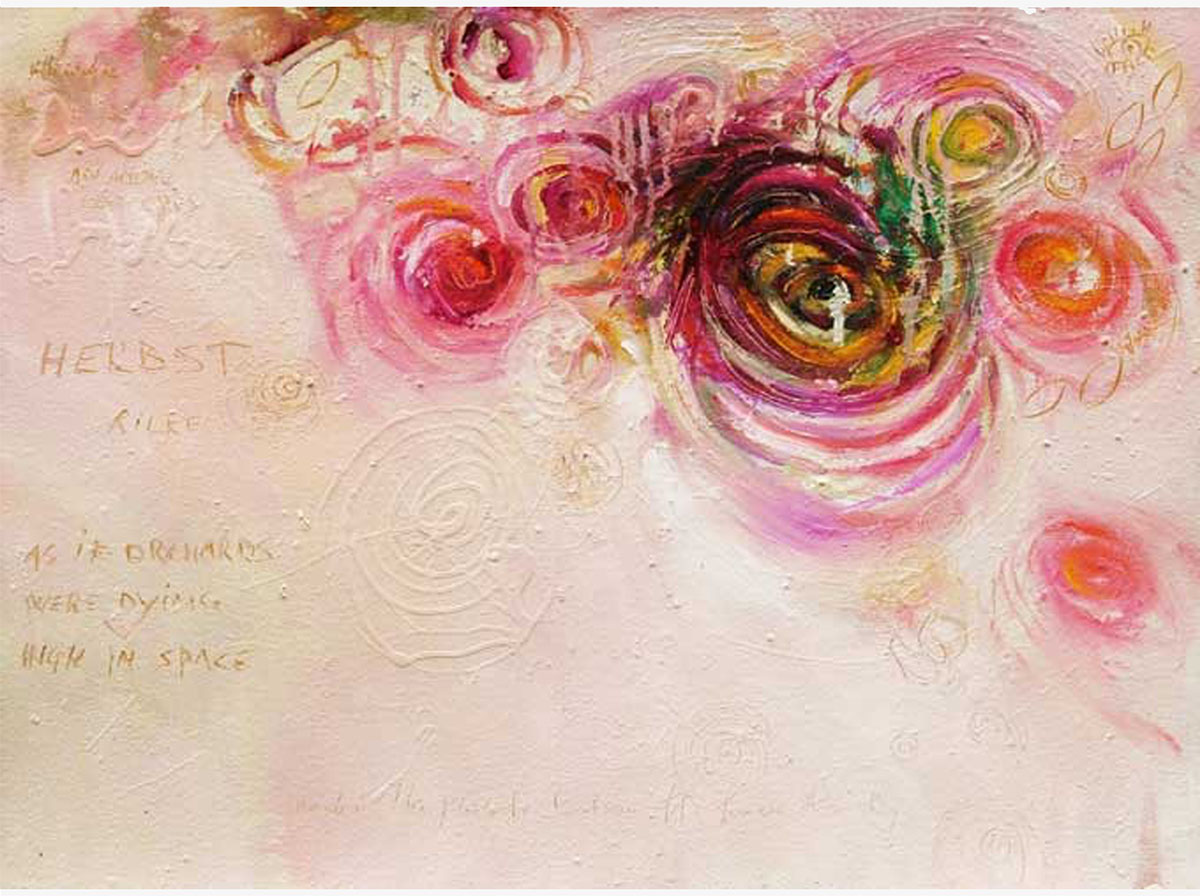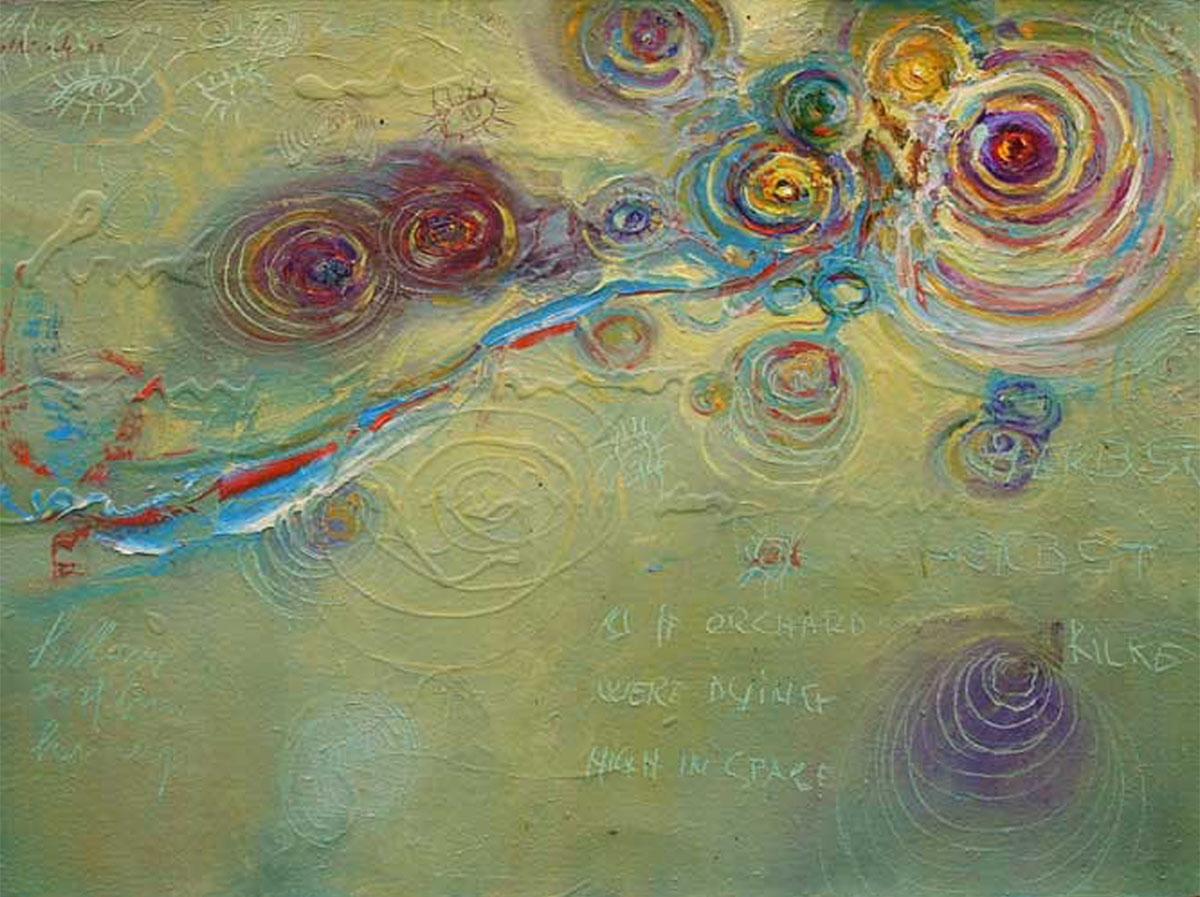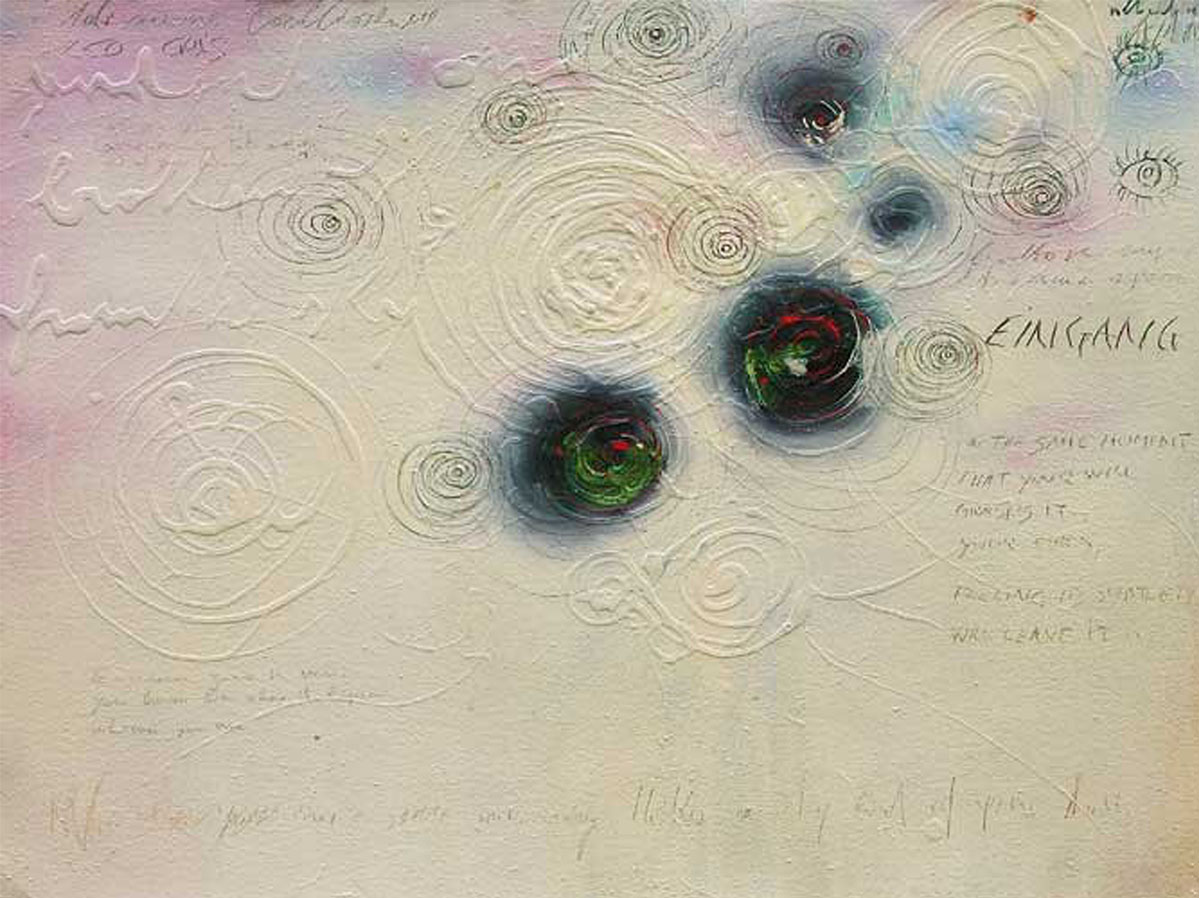Through the metaphorical vision of a well, the artist offers a visual language with which to contemplate the boundless powers of the human psyche and art’s capability to unearth dormant passions which are innate and eternal. The concept of a collective place within us, which conceals the accumulation of innermost thoughts, memories and emotions, is expressed through the individuation of archetypes. In Villicich’s vision, symbolic circular forms reside in an intimate ante-natal liquid substance, proposing the idea of a secret-sacred compartment which springs from the depths of our unconscious mind.
Some of Villicich’s expressionistic images can appear to be very personal representations of water lilies, however one perceives that there is more at play which goes beyond a purely aesthetic experience. Concentric circular forms are found in the symbology of many ancient cultures and recall a number of natural elements, which can range from a simple ripple effect in water to our complex solar system. They evoke the sensation of constant motion throughout the image, like a living entity in evolution.
In the latest paintings of this series circular shapes begin to take secondary focus to an increasingly large and interestingly ambiguous archetype, which could recall a flower, a flame or a dissected stone fruit. It evokes a duality of emotions which is beautifully portrayed in Rainer Maria Rilke’s poetic words “...one moment your life is a stone in you, and the next, a star.”1 Its epicentre’s resemblance to the female anatomy recalls the act of creation, which unearths in the human psyche the mysteries of our primordial beginnings. At the same time the artist begins to insert threads which seem to autonomously branch out across the picture plane like delicate filaments eventfully mapping out the seismic energy of a collective spiritual journey.
A particularly significant matter employed in these works, which is the perfect painterly incarnation of the residues from a ritual experience, is leftover pigments. The last particles of paint left on the brush, which do not quite make it onto the canvas, are carefully cleaned off and stored in an urn, then utilised in charging the next work with an initial coat as if to bless the new creation. Villicich’s undiscriminating love for objects and materials, therefore, plays an important part in the realisation of his surfaces with the incorporation of his treasured recuperated pigments, which are very much like the ashes of oil paint resurrected and ennobled by their destined symbolic significance in these works of art. In ‘Well 26-Sally’ the use of these pigments increases, creating thick encrusted clumps which convey the concept of the sediments of lives lived, both real and imagined. The threads, which have also been meticulously saved from piles of old torn rags, embed a special significance in the artist’s message. It is a reminder of how every gesture and treatment towards the most seemingly insignificant matter can psychically charge the meaning behind the creation of an art work.
Through the intuitive impulse of gestural destruction and reconstruction of the image, the artist’s vision serves to unleash an array of emotions which range from tragedy to ecstasy. In an age where multi-media and technology seem to hold prominence, Villicich’s art not only continues to express concepts through the lyrical medium of painting, but also, shamelessly, focuses on temperament rather than irony, cynicism or rational thought.
Note: 1. Rilke, Rainer Maria, Book of Pictures translated by Robert Bly, New York: Harper Perennia, 1981.read more... read less

